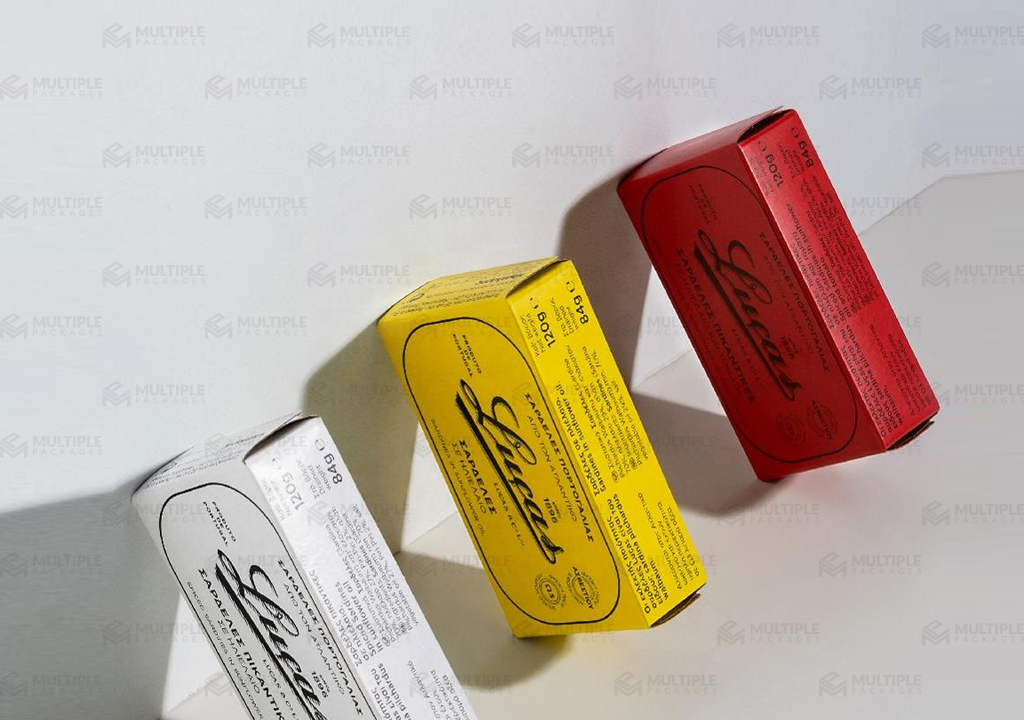The packaging sector is always changing, and the number of companies seeking customized packaging is growing. However, packing isn’t as straightforward as it appears, and concepts like paperweights and grades are crucial to comprehend.
To be honest, understanding these paper grades and weights can be difficult and perplexing. So, if you’re new to the packaging industry, this blog will teach you everything you need to know about paper grades!
Types of Paper Grades in Custom Packaging
Here’s everything you need to know regarding custom packaging.
FBB (Folding Box Board)
Folding box board is a multi-ply pulp material that is chemically and mechanically created, making it sturdy and durable. Because of a bleached chemical layer for smooth and high-quality prints, this material is perfect for printing.
Unlike SBS, which is solely constructed of chemical pulp, the mechanical pulp component of the folding box board gives a stiffer composition. Both, on the other hand, are made of virgin fibers and can be used for any form of product custom packaging.
Foods, cosmetics, and medications all look great in these cartons. FBB is the most often used custom packaging material in the US.
CCNB
It can’t contain a lot of weight, but it’s ideal for rapid, low-cost, and handy custom packaging. If boxes are an issue, they can be used to store dry products, pet food, beans, noodles, and detergent.
A clay-coated news backboard made from old papers abandoned corrugated boxes, and recycled newspaper is what it’s known for (you might even know them as CCNB cartons).
This is one of the most economical and cost-effective printing options accessible. You should think about your items because the paper quality has the capacity to absorb moisture and humidity. The majority of foldable boxes and cartons are made with this material.
Coated Unbleached Kraft or Natural Kraft (SUS or CUK)
Kraft custom packaging, also known as SUS or CUK, is composed entirely of recycled materials, making it an excellent choice for environmentally conscious businesses looking to adopt a more environmentally responsible packaging style.
It’s a great choice for food packaging, and its incredible strength and tear-resistant design make it suitable for heavy beverages, cosmetics, and other items as well.
A thin layer of kaolin clay can be placed on the surface to help it sustain even better printing quality.
Sulfate Board, Solid Bleached (SBS)
SBS, or Solid Bleached Sulfate, is the pinnacle of product custom packaging. The fibers in SBS are chemically pulped and then bleached, similar to folding box boards. The bleached pulp was then shaped into box forms after this process.
This form of custom packaging is widely used in a variety of industries, and it can be used to package anything from food to tobacco to personal care products and anything in between.
Types of Paper Used for Packaging
In the food industry, there are several different types of paper that are used for packaging.
Corrugated boxes, milk cartons, folding cartons, bags and sacks, and wrapping paper all require paper and paperboards. Other examples include tissue paper, paper plates, and cups.
In the food custom packaging sector, many grades of paper are used. Paper is treated, coated, laminated, or impregnated with materials such as waxes, and resins.
Or lacquers when used as primary packaging (that is, in contact with food) to increase its functional and protective features.
The following are the various types of paper used in food custom packaging:
- Greaseproof Paper — Snack snacks, cookies, candy bars, and other fatty items are wrapped in greaseproof paper, which is being phased out in favor of plastic films.
- Kraft paper comes in a variety of colors and textures, including natural brown, unbleached, heavy-duty, and bleached white. Natural kraft paper is the most durable of all the papers and is frequently used for bags and wrapping. Flour, sugar, and dried fruits and vegetables are also packed in it.
- Parchment/Baking Paper – Made from acid-treated pulp, the acid changes the cellulose to make it smoother and more resistant to water and oil, as well as adding wet strength. It is used to pack fats such as butter and lard and is not a good barrier to air and moisture. It does also not heat sealable.
- Corrugated board – A corrugated board is made up of two layers of kraft paper with corrugating fluting paper in the between. Fiberboard is commonly used for shipping bulk food. It is also used for case packaging of retail food products because of its resistance to impact abrasion and crushing damage.
Visit Multiple Packages and get the wholesale custom boxes for your customized packaging.
 +1(332)-233-6292
+1(332)-233-6292

